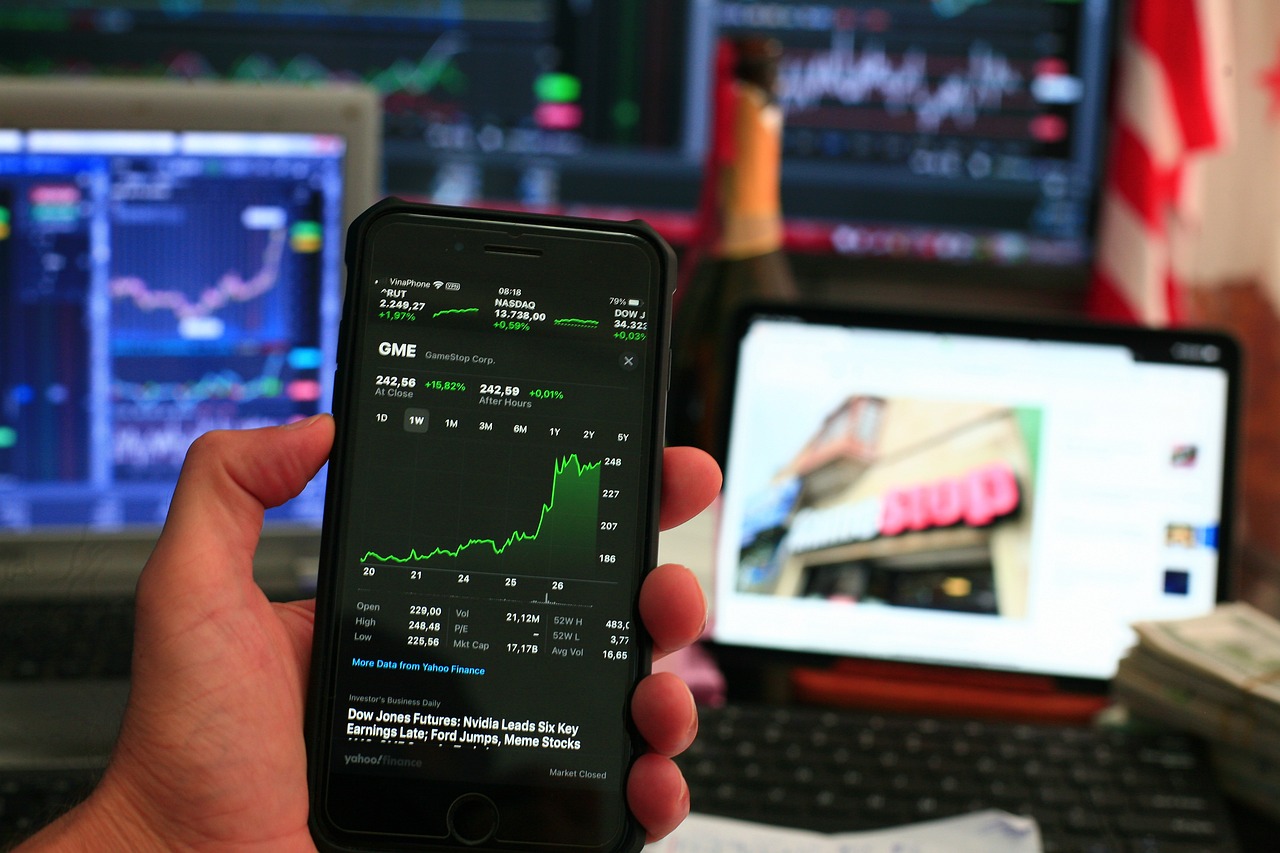How to Analyze Market Sentiment Using Social Media
In today's digital age, social media has become a powerful tool for understanding market sentiment. With billions of users sharing their thoughts, opinions, and experiences, platforms like Twitter, Facebook, and Reddit provide a goldmine of information for businesses and investors alike. But how do you sift through this vast ocean of data to gauge public sentiment effectively? In this article, we will explore effective methods for analyzing market sentiment through social media, highlighting tools, techniques, and best practices that can help you make informed decisions based on public opinion.
Understanding market sentiment is crucial for investors and businesses as it influences market trends, consumer behavior, and overall economic conditions. Imagine trying to navigate a ship through a stormy sea without a compass; that’s what it feels like to make decisions without understanding market sentiment. By analyzing how people feel about a brand, product, or service, you can anticipate market movements and adjust your strategies accordingly. Whether you’re an investor looking to buy low and sell high or a business aiming to connect with your audience, sentiment analysis serves as a valuable tool for decision-making.
Different social media platforms offer unique insights into market sentiment. Each platform has its own culture and user base, which can significantly impact the type of data you collect. For example, Twitter is known for its real-time updates, while Facebook offers deeper community insights. In this section, we will examine the most influential platforms and their roles in shaping public opinion.
Twitter's fast-paced environment makes it an excellent platform for real-time sentiment analysis. With tweets flying in every second, it’s like a live ticker of public opinion. By leveraging Twitter data, you can gauge immediate market reactions and trends. The beauty of Twitter lies in its brevity; a simple tweet can convey a wealth of information about how people feel about a specific topic. But how do you tap into this resource effectively?
Hashtags can serve as powerful tools for tracking sentiment around specific topics. For instance, if you’re interested in understanding public sentiment about a new product launch, searching for relevant hashtags can reveal a treasure trove of opinions. To utilize hashtags effectively:
- Identify trending hashtags related to your topic.
- Monitor the volume of tweets associated with these hashtags.
- Analyze the sentiment of the tweets to gauge public opinion.
By focusing on these steps, you can gain valuable insights into how the public perceives your brand or product.
Engagement metrics such as retweets, likes, and replies provide insights into public sentiment. These metrics are not just numbers; they are indicators of how well your message resonates with your audience. For example, a high number of retweets can signify strong approval, while negative replies may indicate dissent. When analyzing engagement metrics, consider the following:
- Look for patterns in engagement over time.
- Compare engagement metrics against industry benchmarks.
- Identify key influencers who are driving the conversation.
By interpreting these metrics, you can better understand market trends and adjust your strategies accordingly.
Facebook's extensive user base offers rich qualitative data for sentiment analysis. Unlike Twitter, where brevity reigns, Facebook allows users to share longer posts and comments, providing deeper insights into public sentiment. By analyzing user comments and group discussions, you can uncover valuable information about consumer preferences and pain points. The key is to engage with users directly and understand their concerns, which can inform your marketing strategies and product development.
Various tools are available for analyzing social media sentiment effectively. These tools can help you automate the process, making it easier to gather and interpret data. Here, we will review some of the most popular tools and their features, helping users choose the best options for their needs.
NLP tools can automate sentiment analysis by interpreting text data. These tools utilize algorithms to assess the sentiment of social media posts, categorizing them as positive, negative, or neutral. The benefits of using NLP tools include:
- Efficiency in processing large volumes of data.
- Consistent analysis across different platforms.
- Ability to identify trends and patterns in sentiment over time.
By leveraging NLP tools, you can gain a clearer picture of market sentiment without getting bogged down in the details.
Social listening platforms provide comprehensive analysis of brand mentions and sentiment. These tools allow businesses to monitor social media conversations and gather insights about how their brand is perceived. By utilizing these platforms, you can:
- Track brand mentions across various social media channels.
- Analyze sentiment trends related to specific campaigns.
- Identify opportunities for engagement and improvement.
With the right social listening tools, you can transform raw data into actionable insights that drive business strategies.
To achieve accurate results, following best practices in sentiment analysis is essential. Here are some key strategies to enhance the reliability and validity of your sentiment analysis efforts:
- Define clear objectives for your analysis.
- Use a combination of quantitative and qualitative methods.
- Regularly update your analysis to reflect changing sentiments.
By adhering to these best practices, you can ensure that your sentiment analysis is both effective and insightful.
Q: What is market sentiment?
A: Market sentiment refers to the overall attitude of investors and consumers toward a particular market or asset. It can be positive, negative, or neutral and influences market trends and consumer behavior.
Q: How can social media influence market sentiment?
A: Social media platforms serve as a space for public discourse, where opinions and sentiments are shared and can quickly spread. This can lead to rapid changes in market sentiment based on the collective opinions of users.
Q: What tools can I use for sentiment analysis?
A: Popular tools for sentiment analysis include natural language processing (NLP) tools and social listening platforms, which help automate the analysis of large volumes of social media data.
Q: Why is sentiment analysis important for businesses?
A: Sentiment analysis helps businesses understand consumer opinions and preferences, allowing them to make informed decisions about marketing strategies, product development, and customer engagement.

The Importance of Market Sentiment
Understanding market sentiment is crucial for both investors and businesses, as it can significantly influence market trends, consumer behavior, and overall economic conditions. Imagine trying to navigate a ship through a stormy sea without knowing the weather forecast; that's what it's like to make investment decisions without grasping market sentiment. By analyzing how the public feels about a particular stock, product, or brand, businesses can make informed decisions that align with consumer expectations and preferences.
Market sentiment serves as a leading indicator of potential market movements. When investors feel optimistic, they are more likely to buy, driving prices up. Conversely, a pessimistic outlook can lead to selling pressure, causing prices to fall. This ebb and flow of sentiment can create a ripple effect that impacts entire industries. For instance, during times of economic uncertainty, negative sentiment can lead to decreased consumer spending, which in turn affects business revenues and stock prices.
Furthermore, sentiment analysis can provide valuable insights into emerging trends. Businesses can identify shifts in consumer preferences by monitoring social media discussions and online reviews. This proactive approach allows companies to adapt their strategies, whether launching a new product or adjusting marketing campaigns. In a world where public opinion can change in the blink of an eye, staying ahead of the curve is vital for success.
To illustrate the significance of market sentiment, consider the following table that summarizes the impact of sentiment on market performance:
| Sentiment | Market Reaction | Example |
|---|---|---|
| Positive | Prices rise | Strong earnings report |
| Neutral | Stability | Steady economic indicators |
| Negative | Prices fall | Economic downturn news |
In summary, the ability to analyze market sentiment is not just a luxury; it's a necessity in today’s fast-paced financial landscape. By understanding the emotional undercurrents of the market, businesses and investors can make more strategic decisions that ultimately lead to better outcomes. So, the next time you’re considering an investment or a business strategy, ask yourself: what does the sentiment say?

Key Social Media Platforms for Analysis
In today’s digital age, social media is more than just a place to connect with friends; it’s a treasure trove of data that can provide invaluable insights into market sentiment. Different platforms cater to various demographics and user behaviors, making them unique in their contributions to sentiment analysis. Understanding which platforms to focus on can significantly enhance your ability to gauge public opinion accurately. Let’s dive into some of the most influential platforms that are shaping market sentiment.
Twitter stands out as a real-time information hub. With its fast-paced environment, it allows users to share thoughts and opinions instantly. The brevity of tweets means that information spreads quickly, enabling analysts to capture immediate market reactions. For example, a sudden tweet from a prominent figure can lead to a flurry of responses, creating a ripple effect that impacts stock prices or brand reputation. In this way, Twitter acts as a pulse of public opinion, making it an essential platform for sentiment analysis.
Then we have Facebook, which operates differently than Twitter. It offers a more in-depth look at user sentiments through comments and group discussions. Facebook’s extensive user base means that a wide range of opinions can be captured, from casual users to industry experts. By analyzing comments on posts related to a specific topic or brand, businesses can gain qualitative insights that numbers alone can’t provide. For instance, if a new product is launched, examining the comments can reveal not just how many people are interested, but also what specific features excite or concern them.
Another platform worth mentioning is Reddit. Often referred to as “the front page of the internet,” Reddit is home to countless communities, or subreddits, dedicated to virtually any topic imaginable. This allows for deep dives into niche markets and consumer sentiments. The discussions on Reddit can be particularly revealing, as users often share personal experiences and opinions that might not surface on more traditional platforms. Analyzing threads on Reddit can provide a nuanced view of market sentiment, especially for emerging trends or products.
To summarize, each social media platform provides unique insights that can be leveraged for sentiment analysis. While Twitter excels in real-time updates, Facebook offers depth through community engagement, and Reddit provides niche insights. By combining data from these platforms, businesses and investors can create a well-rounded understanding of market sentiment, ultimately leading to more informed decision-making. Understanding the strengths of each platform can help you tailor your analysis approach, ensuring you capture the most relevant data.

Twitter: The Pulse of Public Opinion
Twitter stands out as a vibrant and dynamic platform where opinions flow like a river, making it a key player in understanding market sentiment. With its fast-paced environment, Twitter captures real-time reactions to events, products, and trends, allowing businesses and investors to stay ahead of the curve. Imagine being able to tap into a live feed of public opinion; that's exactly what Twitter offers. The platform's brevity encourages users to express their feelings succinctly, often leading to a quick snapshot of the market's mood.
To effectively leverage Twitter for sentiment analysis, one must consider the art of hashtag utilization. Hashtags act as signposts, guiding users to relevant conversations. By tracking specific hashtags related to your market or product, you can gauge public sentiment surrounding them. For instance, if you're analyzing a new tech gadget, hashtags like #TechTrends or #GadgetReview can reveal what users are saying. This method allows you to filter through the noise and focus on the most pertinent discussions.
Engagement metrics on Twitter are another goldmine for sentiment analysis. When evaluating public opinion, consider the following engagement metrics:
- Retweets: Indicate how many people found a tweet valuable enough to share.
- Likes: Reflect general approval or enjoyment of a tweet.
- Replies: Show how much conversation a tweet has generated, revealing deeper insights into sentiment.
By analyzing these metrics, you can identify trends and shifts in public opinion. For example, a sudden spike in retweets for a negative tweet about a product could signal a brewing controversy that needs immediate attention. Understanding these engagement metrics is crucial for interpreting the overall sentiment accurately.
In summary, Twitter serves as the pulse of public opinion, providing invaluable insights into market sentiment. By harnessing the power of hashtags and engagement metrics, businesses and investors can make informed decisions that align with the current mood of the market. So, next time you scroll through your Twitter feed, remember that each tweet is a potential window into the collective consciousness of consumers.

Using Hashtags for Sentiment Tracking
In the vast ocean of social media, hashtags are like lighthouses guiding us through the fog of information. They serve as powerful tools for tracking sentiment around specific topics, allowing businesses and investors to tap into the pulse of public opinion. By analyzing hashtags, you can uncover the underlying feelings and attitudes of users towards a brand, product, or event. But how do you effectively use hashtags for sentiment tracking?
First off, it’s essential to identify the right hashtags. This involves a bit of detective work. Start by researching trending hashtags related to your industry or the specific topic you’re interested in. Tools like Twitter Trends or Hashtagify can help you discover popular hashtags that are currently being discussed. Once you have a list, you can dive deeper into each hashtag to analyze the sentiment associated with it.
Next, you need to gather the data. This can be done using various social media analytics tools that allow you to pull in posts associated with your chosen hashtags. For instance, tools like Hootsuite or Brandwatch can provide you with a comprehensive overview of how people are engaging with these hashtags. You can look at the volume of posts, the reach of those posts, and importantly, the sentiment expressed within them.
Once you have your data, it’s time to analyze it. Look for patterns in how users are responding to the hashtag. Are they expressing positive sentiments, negative feelings, or are they neutral? This analysis can be done using sentiment analysis tools that utilize Natural Language Processing (NLP). These tools can help categorize the emotions behind the words, giving you a clearer picture of public sentiment.
For example, let’s say you’re tracking the hashtag #NewProductLaunch. You might find a mix of sentiments:
| Sentiment | Percentage |
|---|---|
| Positive | 70% |
| Negative | 20% |
| Neutral | 10% |
This table clearly shows that the majority of users are excited about the launch, which is great news for marketers and investors alike. However, the 20% negative sentiment shouldn’t be ignored. It’s important to dig deeper into those negative comments to understand the concerns and address them proactively.
Finally, don't forget to engage with users who are discussing your hashtags. Responding to comments, thanking users for their feedback, and addressing concerns can help build a positive brand image. Remember, social media is not just about listening; it’s also about engaging. By actively participating in conversations around your hashtags, you can foster a community that feels valued and heard.
In summary, using hashtags for sentiment tracking is an effective strategy to gauge public opinion. By identifying the right hashtags, gathering data, analyzing sentiment, and engaging with users, you can gain invaluable insights that inform your business decisions and marketing strategies.

Engagement Metrics: What to Look For
When diving into the world of social media sentiment analysis, one of the most critical aspects to consider is engagement metrics. These metrics act as a window into how audiences are interacting with content, and they can provide invaluable insights into public sentiment. But what exactly should you be looking for? Let’s break it down.
First off, you want to focus on the big three: likes, shares, and comments. Each of these metrics tells its own story. For instance, a high number of likes indicates that people resonate with the content, while shares can signify that they find it valuable enough to pass along to their own networks. Comments, on the other hand, can provide deeper insights into audience sentiment, offering a qualitative layer that numbers alone cannot convey.
Here’s a quick overview of what each engagement metric can reveal:
| Metric | What It Indicates |
|---|---|
| Likes | General approval or agreement with the content. |
| Shares | Content is deemed valuable and worth spreading. |
| Comments | In-depth opinions and discussions about the content. |
Now, it’s essential to look beyond just the numbers. Consider the context behind these metrics. For example, a post may have a high number of likes, but if the comments are predominantly negative, it could indicate a disconnect between initial approval and deeper sentiment. This is where qualitative analysis becomes crucial.
Additionally, engagement metrics can vary significantly across different platforms. For instance, what constitutes a good engagement rate on Twitter might differ from Facebook or Instagram. It’s vital to set benchmarks based on the specific platform you are analyzing. This way, you can accurately gauge whether your content is performing well or if adjustments are needed.
To make your analysis even more robust, consider tracking engagement metrics over time. By observing trends, you can identify patterns and shifts in public sentiment. For instance, if you notice a spike in shares or comments after a particular event or announcement, it could signal a significant change in market sentiment that warrants further investigation.
In conclusion, engagement metrics are more than just numbers; they are a reflection of how your audience feels about your content and, by extension, your brand or market. By paying attention to these metrics and analyzing them in context, you can gain a clearer understanding of market sentiment and make more informed decisions moving forward.
- What are engagement metrics?
Engagement metrics are indicators of how audiences interact with content on social media, including likes, shares, and comments. - Why are engagement metrics important for sentiment analysis?
They provide insights into public sentiment and help gauge how well content resonates with audiences. - How can I improve engagement on my social media posts?
Creating high-quality, relevant content and encouraging audience interaction can significantly enhance engagement rates.

Facebook: Community Insights
When it comes to understanding market sentiment, Facebook stands out as a goldmine of qualitative data. With billions of users sharing their thoughts, experiences, and opinions, this platform provides invaluable insights into consumer behavior and public sentiment. Unlike the rapid-fire nature of Twitter, Facebook allows for more in-depth discussions, making it easier to grasp the nuances of what people are feeling about a brand, product, or market trend.
One of the most powerful aspects of Facebook is its ability to foster community discussions. Groups and pages dedicated to specific interests or industries often become hubs for passionate conversations. By diving into these discussions, businesses and investors can gain a clearer picture of how their target audience perceives their offerings. For instance, a company launching a new product can monitor relevant Facebook groups to see how potential customers are reacting, allowing them to adjust their marketing strategies accordingly.
Moreover, Facebook's comment sections are treasure troves of sentiment analysis opportunities. Users often express their thoughts in lengthy comments, providing context that simple likes or shares cannot convey. By analyzing these comments, you can uncover valuable insights into customer pain points, preferences, and overall sentiment. This qualitative data can be more telling than quantitative measures, revealing the emotions behind the numbers.
To effectively analyze sentiment on Facebook, consider employing a few strategies:
- Keyword Monitoring: Identify key phrases or terms relevant to your brand or industry. This can help you track conversations and sentiment around specific topics.
- Sentiment Scoring: Develop a scoring system to categorize comments as positive, negative, or neutral. This can help quantify the overall sentiment and make it easier to track changes over time.
- Engagement Analysis: Look at the engagement metrics on posts, such as comments and shares, to gauge the level of interest and sentiment toward particular topics.
In addition to these strategies, leveraging Facebook's built-in analytics tools can provide deeper insights. The Facebook Insights feature allows page administrators to view detailed metrics about their audience, including demographics, engagement rates, and more. This data can be instrumental in tailoring content that resonates with your audience and drives positive sentiment.
As you embark on your sentiment analysis journey on Facebook, remember that the context is key. The emotions behind the words can often be as important as the words themselves. By taking the time to understand the community dynamics and engaging with users, you can turn sentiment analysis into a powerful tool for making informed business decisions. In this ever-evolving digital landscape, staying attuned to the pulse of public opinion can give you a distinct competitive advantage.
Q: How can I start analyzing sentiment on Facebook?
A: Begin by identifying relevant groups and pages, then monitor discussions and comments. Use keyword monitoring and sentiment scoring to quantify insights.
Q: What tools can help me with Facebook sentiment analysis?
A: Tools like Hootsuite, Brandwatch, and Sprout Social offer robust features for analyzing social media sentiment, including Facebook.
Q: Is Facebook sentiment analysis useful for all industries?
A: Absolutely! Any industry can benefit from understanding customer sentiment, as it helps tailor marketing strategies and improve products based on feedback.

Tools for Analyzing Social Media Sentiment
In today's digital age, the ability to analyze market sentiment through social media is more important than ever. With the vast amount of data generated daily, having the right tools can make all the difference in interpreting public opinion accurately. There are various tools available that cater to different needs, whether you’re a business owner looking to enhance your marketing strategies or an investor trying to gauge market trends. In this section, we will explore some of the most effective tools for analyzing social media sentiment, highlighting their features and benefits.
One of the most powerful categories of tools for sentiment analysis is Natural Language Processing (NLP) tools. These tools use advanced algorithms to automate the process of interpreting text data, allowing users to analyze large volumes of social media content quickly and efficiently. By breaking down text into understandable components, NLP tools can help identify the emotional tone behind public sentiment. For instance, they can distinguish between positive, negative, and neutral sentiments, providing a clearer picture of how people feel about a particular topic or brand.
Another essential category is social listening platforms. These platforms are designed to monitor online conversations, brand mentions, and overall sentiment across various social media channels. They offer comprehensive analysis tools that can track how public perception changes over time, which is vital for businesses looking to adapt their strategies in real-time. Some popular social listening platforms include:
- Hootsuite Insights: Offers detailed analytics and reporting features.
- Brandwatch: Provides in-depth sentiment analysis and trend tracking.
- Sprout Social: Focuses on engagement metrics and audience insights.
Each of these tools has its unique strengths, making it crucial to choose one that aligns with your specific requirements. For example, if you are looking for a tool that excels in real-time data analysis, Hootsuite Insights might be the best fit. On the other hand, if you want a more comprehensive view of brand sentiment over time, Brandwatch could be the better choice.
When utilizing these tools, it’s essential to have a clear understanding of what you want to achieve. Are you looking to monitor brand reputation, analyze customer feedback, or track competitors? Defining your goals will help you select the most appropriate tools and make the most of their features. Additionally, combining different tools can enhance your analysis, as each tool may provide unique insights that contribute to a more holistic view of market sentiment.
In conclusion, the right tools for analyzing social media sentiment can empower businesses and investors to make informed decisions based on public opinion. By leveraging NLP tools and social listening platforms, you can gain valuable insights that drive your strategies forward. Remember, the key is not just to gather data but to interpret it effectively to stay ahead in today’s fast-paced market.
Q1: What is sentiment analysis?
Sentiment analysis is the process of determining the emotional tone behind a series of words, used to gain an understanding of the attitudes, opinions, and emotions expressed within an online mention or conversation.
Q2: Why is social media sentiment analysis important?
Social media sentiment analysis helps businesses and investors understand public perception, which can influence marketing strategies, investment decisions, and overall brand health.
Q3: What tools can I use for sentiment analysis?
There are numerous tools available, including NLP tools like Google Cloud Natural Language and social listening platforms like Brandwatch and Hootsuite Insights. Each tool offers different features suitable for various analysis needs.
Q4: How often should I conduct sentiment analysis?
The frequency of sentiment analysis depends on your objectives. For real-time monitoring, daily or weekly analysis may be necessary, while for broader trends, monthly or quarterly reviews could suffice.

Natural Language Processing (NLP) Tools
In the ever-evolving landscape of social media, Natural Language Processing (NLP) tools have emerged as essential assets for businesses and investors eager to decode the complexities of market sentiment. These tools utilize advanced algorithms to analyze and interpret human language, providing insights that can significantly influence decision-making processes. Imagine trying to sift through thousands of tweets or comments to gauge public opinion; without NLP, this task would be not only time-consuming but also prone to human error. With NLP, however, you can automate this analysis, allowing you to focus on what really matters—making informed decisions based on accurate data.
NLP tools are designed to handle large volumes of text data, breaking it down into digestible insights. They can identify sentiment by classifying text as positive, negative, or neutral, and even detect the intensity of those sentiments. For instance, a tweet saying, "I love this new product!" would be classified as a strong positive sentiment, while "This product is okay" might be deemed neutral. The ability to automate sentiment classification not only saves time but also enhances the reliability of the analysis.
One of the key advantages of using NLP tools is their capability to analyze context. Unlike basic sentiment analysis methods that might only consider individual words, NLP tools can understand the context in which words are used, allowing for a more nuanced interpretation of public opinion. For example, the word "sick" can have vastly different meanings depending on the context—it's positive in a phrase like "That concert was sick!" but negative in "I feel sick today." NLP tools can discern these differences, providing a clearer picture of market sentiment.
Moreover, NLP tools can also help in tracking trends over time. By analyzing sentiment across various timeframes, businesses can identify shifts in public opinion and respond accordingly. For instance, if a product receives a sudden surge of negative sentiment, it might signal a potential issue that needs immediate attention. This proactive approach can be a game-changer in maintaining brand reputation and customer trust.
When selecting an NLP tool, it's essential to consider factors such as:
- Ease of Use: The interface should be user-friendly, allowing even those without technical expertise to navigate it effectively.
- Integration Capabilities: The tool should easily integrate with existing systems and platforms to streamline your analysis process.
- Customization Options: Look for tools that allow customization to fit your specific needs and objectives.
- Real-Time Analysis: The ability to provide real-time insights is crucial for staying ahead in fast-paced markets.
In conclusion, leveraging NLP tools can significantly enhance your ability to analyze market sentiment through social media. By automating the process, understanding context, and tracking trends, you can make data-driven decisions that propel your business or investment strategy forward. As the digital landscape continues to grow, embracing these technologies will be vital for staying competitive and responsive to public sentiment.
Q: What is Natural Language Processing?
A: Natural Language Processing (NLP) is a branch of artificial intelligence that focuses on the interaction between computers and humans through natural language. It enables machines to understand, interpret, and respond to human language in a valuable way.
Q: How can NLP tools help in market sentiment analysis?
A: NLP tools can automate the process of analyzing large volumes of text data from social media, classify sentiments, understand context, and track trends over time, providing valuable insights for businesses and investors.
Q: Are NLP tools easy to use?
A: Many NLP tools are designed with user-friendly interfaces, making them accessible even to those without technical expertise. However, the ease of use can vary by tool, so it's essential to evaluate options based on your needs.
Q: Can NLP tools analyze multiple languages?
A: Yes, many advanced NLP tools are capable of analyzing text in multiple languages, though the level of effectiveness can vary based on the specific tool and the languages in question.

Social Listening Platforms
In today's digital landscape, have become essential tools for businesses and investors looking to dive deep into market sentiment. These platforms enable users to monitor and analyze conversations happening across various social media channels, providing invaluable insights into public opinion and consumer behavior. Imagine having a virtual ear to the ground, picking up on the subtle shifts in sentiment that could impact your business decisions. With the right social listening tool, you can transform noise into actionable intelligence.
Social listening platforms work by aggregating data from multiple social media sources, including Twitter, Facebook, Instagram, and more. They track brand mentions, keywords, and hashtags, allowing you to see how people are talking about your brand or relevant industry topics. This capability is not just about understanding what is being said, but also about grasping the emotional tone behind those conversations. For instance, a surge in negative sentiment around a product launch could signal potential issues that need immediate attention.
One of the key features of social listening platforms is their ability to provide sentiment analysis through advanced algorithms and Natural Language Processing (NLP). These technologies analyze the context of social media posts, categorizing them as positive, negative, or neutral. This means you can gauge how your audience feels about your brand or a specific campaign in real-time, allowing you to pivot your strategy if necessary. For example, if a new marketing campaign receives overwhelmingly negative feedback, you can quickly reassess your approach before it causes long-term damage.
When choosing a social listening platform, it's important to consider the specific features that will best serve your needs. Some popular platforms include:
| Platform | Key Features | Best For |
|---|---|---|
| Brandwatch | Comprehensive analytics, sentiment analysis, and trend tracking | Large enterprises |
| Hootsuite Insights | Integration with Hootsuite, real-time social listening | Small to medium businesses |
| Sprout Social | Engagement tracking, reporting, and social listening | Social media managers |
In addition to tracking sentiment, social listening platforms often provide valuable competitive analysis features. By monitoring what competitors are saying and how their audiences are responding, you can identify opportunities to differentiate your brand and improve your market positioning. This competitive insight is like having a backstage pass to your industry's most crucial conversations, allowing you to stay ahead of the curve.
Ultimately, leveraging social listening platforms can enhance your decision-making process, enabling you to make data-driven choices that resonate with your audience. By understanding the sentiment behind social media conversations, you can tailor your marketing strategies, improve customer engagement, and ultimately drive business growth. So, whether you're a seasoned investor or a business owner, incorporating social listening into your toolkit is a step toward unlocking the full potential of market sentiment analysis.
- What is social listening? Social listening is the process of monitoring and analyzing online conversations to understand public sentiment and consumer behavior.
- How can social listening platforms help my business? These platforms provide insights into audience opinions, allowing you to adjust your marketing strategies and improve customer engagement.
- What features should I look for in a social listening tool? Key features include sentiment analysis, trend tracking, competitive analysis, and integration with other marketing tools.

Best Practices for Conducting Sentiment Analysis
When it comes to conducting sentiment analysis, there are several best practices that can significantly enhance the accuracy and reliability of your findings. First and foremost, it's essential to define your objectives clearly. Are you looking to gauge public sentiment about a specific product, or are you interested in understanding broader market trends? Having a clear goal will guide your analysis and help you focus on the most relevant data.
Another crucial aspect is the selection of the right tools. With a plethora of sentiment analysis tools available, choosing the right one can be overwhelming. Look for tools that offer features such as real-time data collection, advanced Natural Language Processing (NLP), and the ability to analyze various social media platforms. Some popular tools include:
| Tool | Features | Best For |
|---|---|---|
| Hootsuite Insights | Real-time data, sentiment scoring, customizable dashboards | Comprehensive social media monitoring |
| Brandwatch | Advanced analytics, image recognition, trend analysis | In-depth market research |
| Sprout Social | Engagement metrics, reporting tools, social listening | Small to medium businesses |
Once you have your tools in place, it’s time to collect and clean your data. This step is often overlooked, but it's vital. Ensure that the data you collect is relevant and free from noise. For instance, if you're analyzing tweets about a new product, filter out unrelated tweets or spam. Cleaning your data helps in achieving more accurate sentiment scores.
Next, consider the context of the data. Sentiment can vary based on language, culture, and even the platform where the conversation is happening. For example, a tweet that sounds negative might be a sarcastic comment rather than genuine criticism. This is where NLP tools can shine, as they often come equipped with the ability to understand context and nuances in language.
Moreover, regularly monitor and adjust your analysis strategy. Market sentiment is not static; it evolves with trends, news, and consumer behavior. By continuously monitoring the sentiment and adjusting your approach, you can stay ahead of the curve and make informed decisions based on the latest insights.
Lastly, don't forget to validate your findings. Cross-reference your sentiment analysis results with other data sources, such as sales figures or customer feedback. This validation process ensures that your insights are not only accurate but also actionable. Remember, sentiment analysis is a powerful tool, but like any tool, it’s only as good as the way you use it.
- What is sentiment analysis? Sentiment analysis is the process of determining the emotional tone behind a series of words, used to understand the attitudes, opinions, and emotions expressed in online conversations.
- Why is sentiment analysis important? It helps businesses and investors gauge public opinion, predict market trends, and make informed decisions.
- Which platforms are best for sentiment analysis? Twitter, Facebook, and Reddit are among the most influential platforms for gathering insights into market sentiment.
- How can I improve the accuracy of my sentiment analysis? By clearly defining your objectives, selecting the right tools, cleaning your data, and continuously monitoring your strategy.
Frequently Asked Questions
- What is market sentiment and why is it important?
Market sentiment refers to the overall attitude of investors and consumers towards a particular market or asset. It plays a crucial role in influencing market trends and consumer behavior, making it essential for businesses and investors to gauge public opinion to make informed decisions.
- Which social media platforms are best for analyzing market sentiment?
Twitter, Facebook, and Reddit are some of the most influential platforms for analyzing market sentiment. Each offers unique insights, with Twitter providing real-time reactions, Facebook offering rich qualitative data, and Reddit showcasing community discussions.
- How can I use Twitter for sentiment analysis?
You can leverage Twitter by tracking hashtags related to your market or topic of interest. Additionally, engagement metrics such as retweets, likes, and replies can help you understand public sentiment and trends.
- What are engagement metrics, and why are they important?
Engagement metrics like retweets, likes, and replies are indicators of how users interact with content. They are important because they provide insights into public sentiment and can help identify trends within the market.
- What tools are available for analyzing social media sentiment?
There are various tools available, including Natural Language Processing (NLP) tools and social listening platforms. NLP tools automate sentiment analysis by interpreting large volumes of text, while social listening platforms monitor brand mentions and sentiment, helping businesses refine their strategies.
- What are some best practices for conducting sentiment analysis?
To achieve accurate sentiment analysis, it’s essential to follow best practices such as using a diverse set of data sources, regularly updating your analysis, and validating your findings through multiple metrics to enhance reliability and validity.


















